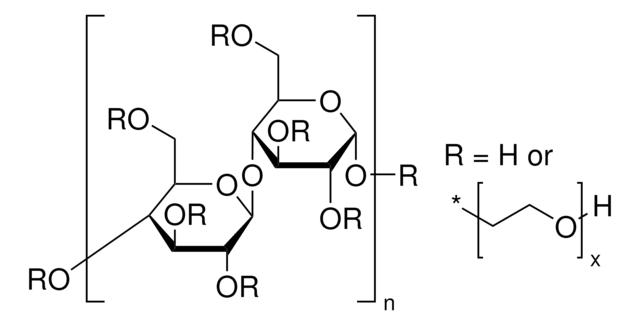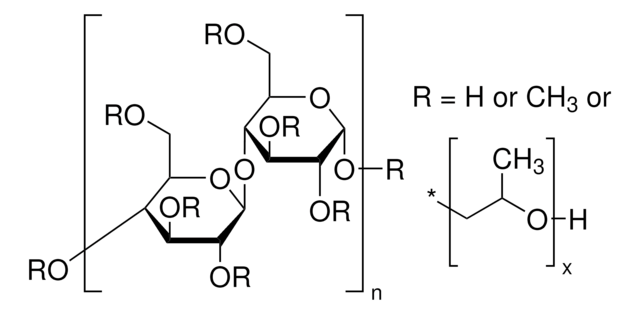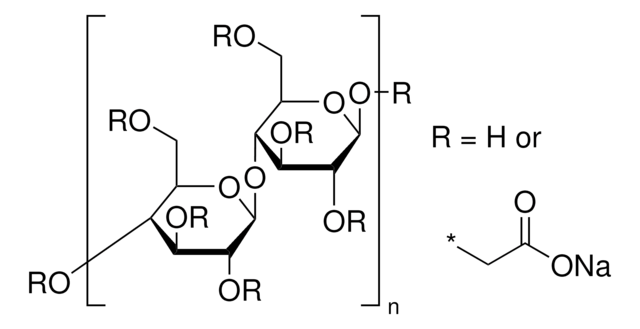191906
Hydroxypropyl cellulose
average Mw ~1,000,000, powder, 20 mesh particle size (99% through)
About This Item
Prodotti consigliati
Descrizione
biological oxygen demand (BOD) 14,000 ppm
Forma fisica
powder
Temp. autoaccensione
752 °F
PM
average Mw ~1,000,000
Impurezze
<5 wt. %
Dimensione particelle
20 mesh (99% through)
pH
5.0-8.5
Tensione interfacciale olio minerale
12.5 dyn/cm, 0.1 wt. % in H2O (vs. mineral oil)
Viscosità
1,275-3,500 cP, 1 wt. % in H2O(25 °C, Brookfield, spindle #3) (30 rpm)(lit.)
Solubilità
H2O: insoluble (above 45 °C)
polar organic solvents: soluble
Densità
0.5 g/mL at 25 °C (lit.)
InChI
1S/C12H20N2/c1-5-12(13)11-7-6-10(14(3)4)8-9(11)2/h6-8,12H,5,13H2,1-4H3
RRHXDYJWVYFMKV-UHFFFAOYSA-N
Cerchi prodotti simili? Visita Guida al confronto tra prodotti
Categorie correlate
Applicazioni
- Thermo-responsive aqueous foams: Hydroxypropyl cellulose has been studied for its properties as a green polymer that can alter its solubility with temperature changes, making it suitable for responsive foam applications (Braunschweig, 2019).
- Interaction mechanism in aqueous solutions: A study on the interaction between hydroxypropyl cellulose and water in solutions, focusing on the importance of polymer chain length in determining the physical properties of the solutions (Martin-Pastor and Stoyanov, 2020).
- Corrosion inhibition: Hydroxypropyl cellulose has shown effectiveness as a corrosion inhibitor for aluminium in acidic environments, highlighting its potential in material science and engineering applications (Nwanonenyi et al., 2019).
- Orally disintegrating films: This application involves the formulation design of hydroxypropyl cellulose films, aiming to enhance the delivery and dissolution profile of pharmaceuticals, making it significant in drug delivery and pharmaceutical sciences (Takeuchi et al., 2018).
Codice della classe di stoccaggio
11 - Combustible Solids
Classe di pericolosità dell'acqua (WGK)
WGK 1
Punto d’infiammabilità (°F)
Not applicable
Punto d’infiammabilità (°C)
Not applicable
Dispositivi di protezione individuale
Eyeshields, Gloves, type N95 (US)
Scegli una delle versioni più recenti:
Possiedi già questo prodotto?
I documenti relativi ai prodotti acquistati recentemente sono disponibili nell’Archivio dei documenti.
I clienti hanno visto anche
Il team dei nostri ricercatori vanta grande esperienza in tutte le aree della ricerca quali Life Science, scienza dei materiali, sintesi chimica, cromatografia, discipline analitiche, ecc..
Contatta l'Assistenza Tecnica.



